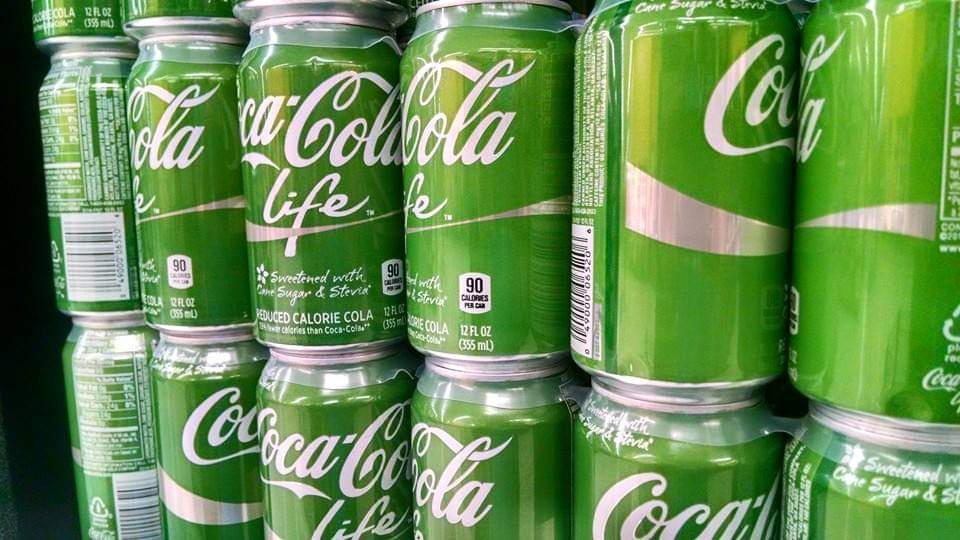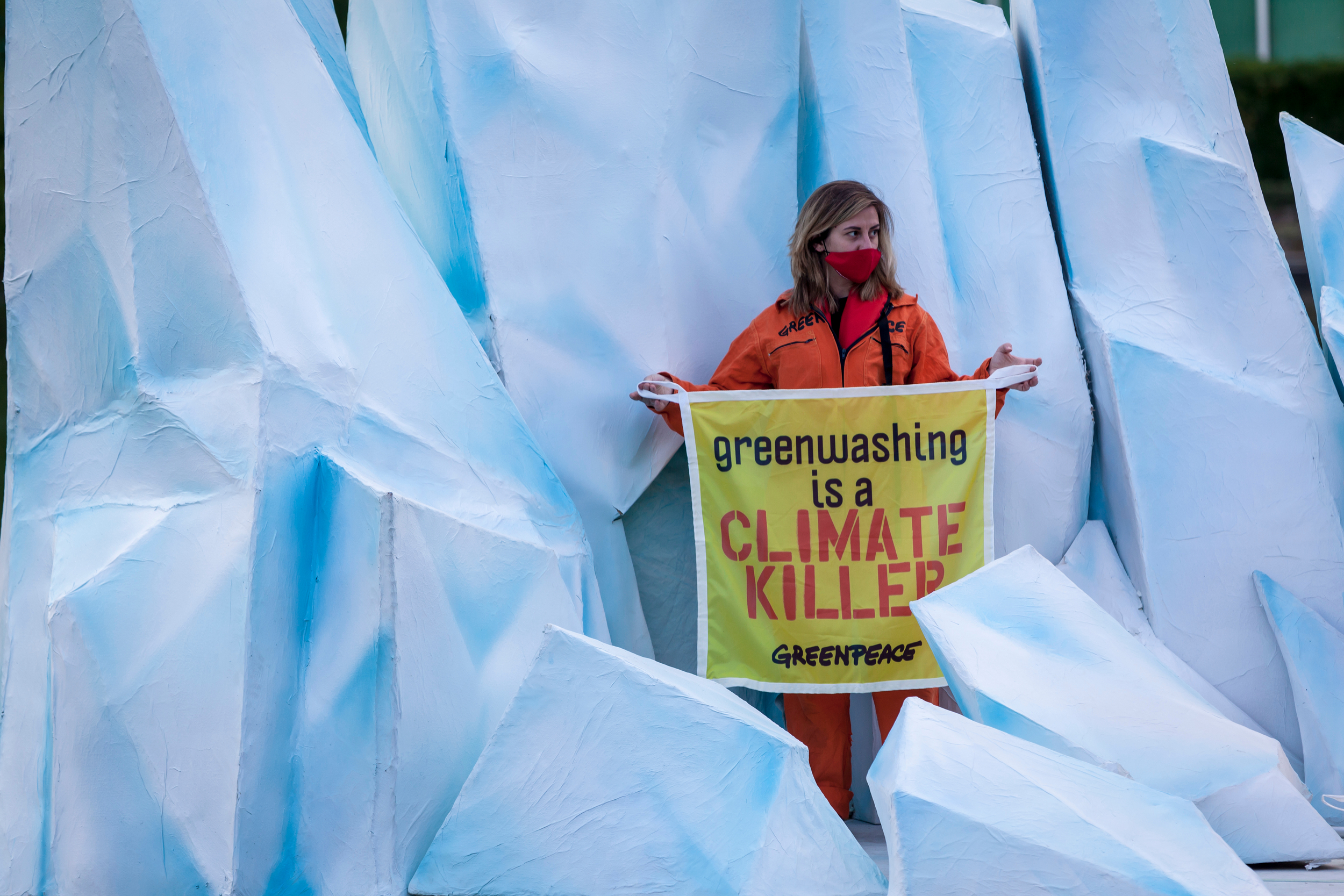If you’ve heard the call to protect the planet, you’re not alone. Many of us are taking action to help stop climate change from getting worse. We’re getting wise. Making small steps to transform our lives and holding people in power to account. And corporations and companies know it.
Ethical business is booming. Ethical spending in the UK went up by nearly 24% between 2019 and 2020, and the market is now worth £122billion. To appeal to an increasingly savvy public, companies need to do their bit too.
But some choose the easy way out instead: greenwashing.
What is greenwashing?
Greenwashing is a PR tactic used to make a company or product appear environmentally friendly, without meaningfully reducing its environmental impact.
Think: bold claims, nature-inspired imagery or green buzzwords that rarely hold up when looked at in more depth. Or vague claims and ‘green’ solutions that misdirect you and take you away from the real issues.
Greenwashing aims to boost a company’s public image or make more sales by convincing us that buying from them aligns with our values.

Coca-cola life used green as the main colour for its packaging. Image via Wikimedia
Greenwashing examples
The term greenwashing was coined in the 1980s, but there are examples of greenwashing before that. In recent years, there are new tricks and gimmicks that make it harder to tell what’s greenwash and what’s not.
If you’re trying to spot greenwashing, look out for these features or sins:
- Token gestures. Promoting one ‘green’ feature, while ignoring other more important environmental issues. For example, a fast food company could promote a switch to recyclable paper straws, while still using meat suppliers responsible for burning down forests.
- Not being specific. Using very broad or poor definitions on purpose to cause misunderstanding. For example, using a recycling symbol on packaging without telling you which part is or can be recycled.
- No evidence to back up a claim. When a company wants you to take their word without sharing the proof behind their claim. So the claim can’t be checked or certified independently by someone else.

EasyJet advert shows blue skies and reads “Destination: Zero emmissions.” Image via Adfree Cities
- Using green buzzwords or images. Adverts or packaging with lots of natural scenes, or images like trees and leaves. Or buzzwords that are meaningless without explanation, like ‘non-toxic’, ‘all natural’, ‘eco conscious’ and ‘chemical-free’. This also includes putting a green label onto a product or company that’s environmentally harmful anyway.
- Carbon offsetting. A way to try to make up for the pollution you cause, instead of trying to reduce it. Usually it’s done by paying others to reduce carbon emissions or take carbon out of the atmosphere. It’s greenwashing because it still means lots of carbon goes into the atmosphere.
- Redundant claims. This is when the claim is not needed. For example, a company advertising a product as vegan or plant-based, when it would be anyway.
We visited Innocent drinks – owned by Coca-Cola-today to call out their greenwashing @bearwitness2019 @GheorghiuAndy @plasticsoupfoun pic.twitter.com/dR4D2Li6Fi
— Plastics Rebellion (@PlasticsRebel) June 1, 2021
Why is it a problem?
Greenwashing lets companies keep business as usual, while pretending they’re doing better. So all the planet-polluting, habitat-harming things they do carry on. And there may be very few attempts to change this.
This locks in a harmful social and economic system that takes more from the Earth than we can sustain. Greenwashing delays or stops the action we need to move to better systems for people and the planet. A false eco-branded product or carbon offsetting may make us feel we’re doing well. But these efforts are small compared to the changes we need to make together.
When companies greenwash, they distract us. They divert our attention. We’re led into the belief that everything is fine, when it’s not. And that environmental problems are being handled or solved by someone else, when they’re not. Greenwashing means we miss supporting the companies who are reducing their environmental impact. And that we won’t come together to pressure the rest to change the way they do things.
How to avoid greenwashing
Companies use lots of sneaky tactics which can make it hard to avoid greenwashing completely. But there are two ways you can get ahead of greenwash. One: equip yourself with knowledge so you can avoid getting tricked. And two: help create a world where companies can’t get away with greenwashing.
Here are some things you can do:
Challenge companies for greenwashing. Public pressure is an effective way to expose misleading advertising and send the message that greenwashing won’t cut it. That might mean tagging the company on social media, signing petitions, telling your friends, complaining to the UK’s advertising watchdog or supporting organisations campaigning against greenwash.
Become an active citizen. We know companies need to do things differently so we need to come together to demand it. Voting, writing letters to your MP, protesting and joining community groups are just some of the ways that you can make your voice heard. You can take steps to push for change to happen.

Greenpeace climate action at an oil giant’s headquarters in Rome. © Greenpeace / Francesco Alesi
Stay informed. Familiarise yourself with common greenwashing techniques so you can spot them in the wild. You can also make use of paid-for resources like Ethical Consumer, which provides information on spending and saving your money. Or find free guides from credible sources on lots of topics, such as:
Learning about things can help you make informed decisions for your needs and lifestyle. You’ll slowly start noticing when a company is greenwashing. And this can help you avoid being tricked and start pushing for meaningful changes to environmental problems.



